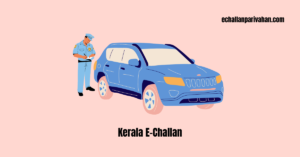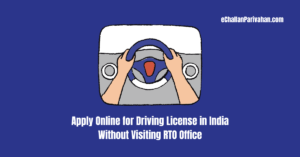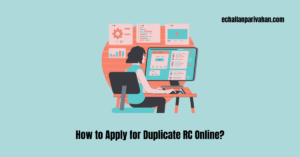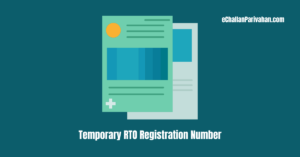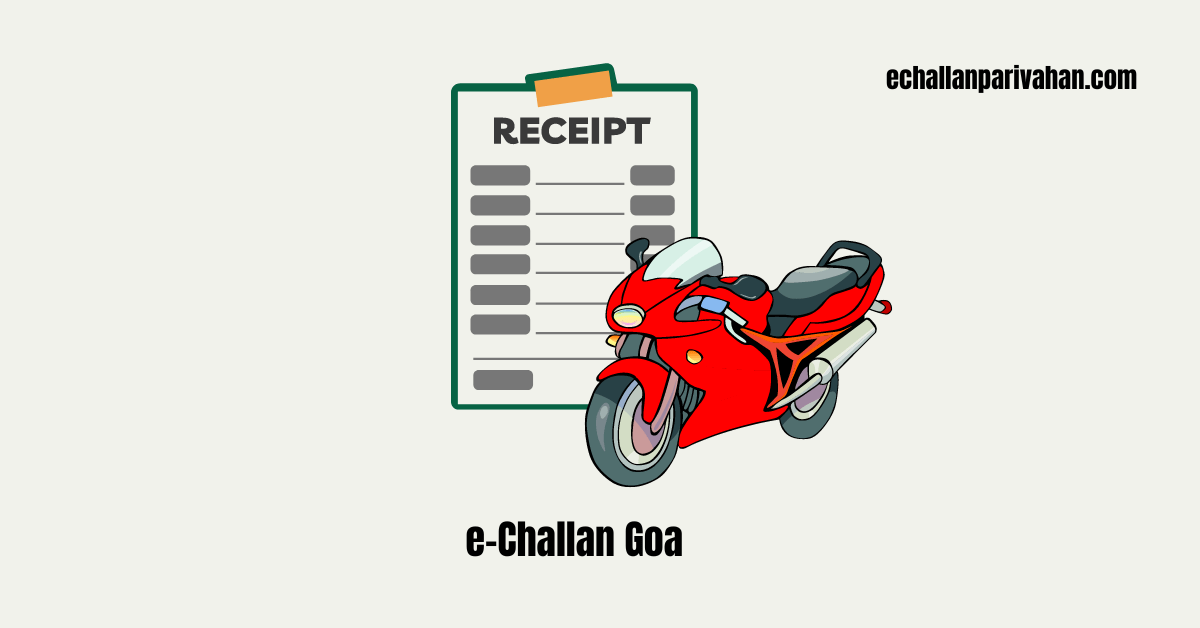 E-Challan Goa: Check Goa Traffic Challan Status and Pay the Traffic E-Challan Online and Offline either Through Goa Traffic Police Department’s Official Website or Through Parivahan Portal.
E-Challan Goa: Check Goa Traffic Challan Status and Pay the Traffic E-Challan Online and Offline either Through Goa Traffic Police Department’s Official Website or Through Parivahan Portal.
An E-Challan, short for Electronic Challan, is a digital traffic ticket issued for violations of traffic rules. It replaces the traditional paper-based challan system, bringing efficiency and transparency to the process of penalizing traffic offenders.
The E-Challan system in Goa is integrated with advanced technologies such as CCTV cameras and speed guns, which capture violations in real-time, ensuring that no infraction goes unnoticed.
The introduction of the E-Challan system marks a significant shift from manual to digital enforcement of traffic rules. It not only aids in better tracking and management of violations but also serves as a deterrent for potential offenders.
Check Status and Pay E-Challan Traffic Fine in Goa Through Official Website of State Traffic Department
To check your traffic challan status, issued by the Goa traffic police and initiate the payment of fines online through the official website of the Goa Traffic Police Department https://goaonline.gov.in/, follow the steps provided below.
Step 1: Registration
- Visit the official portal at goaonline.gov.in. If you’re a first-time user, you’ll need to register by providing some basic information.
- Here, enter your email ID, and mobile number.
- Then, enter the Captcha Code and click on Generate OTP.
- An OTP will be received on your mobile number, enter the OTP in the designated area and click on Submit OTP button.

- Now, to complete the registration process, provide all necessary details on this page.
- Remember, the details over which there is a star mark (*), providing such information is mandatory.
- Here, enter your Name, Date of Birth, Gender, Country, State, Address, Taluka, Village, and Pincode.
- Then, generate a password and confirm the password.

- Now, tick the declaration box in front of the “I agree to the Terms & Conditions” statement.
- Enter the Captcha Code.
- Then, click on the Register/Signup button.
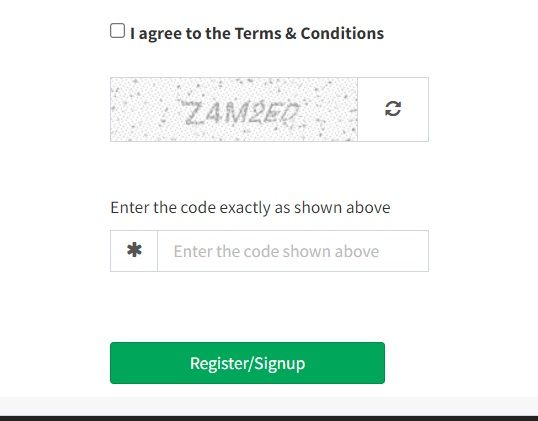
Step 2: Logging
- Once registered, use your credentials to log into the system.

Step 3: Locating Your Challan
After logging in, you’ll be presented with options to search for your challan. You can do this in two ways:
- By Vehicle Number
- By Notice Number
Step 4: Reviewing Challan Details
Upon entering either of the above details, the system will display information related to your violation. This includes:
- Date and time of the offense
- Location where the violation occurred
- Type of violation (e.g., speeding, red light jumping, etc.)
- Fine amount
Carefully review these details to ensure they correspond to your vehicle and the incident in question.
Step 5: Initiating Payment
- To proceed with the payment, you’ll need to enter your driving license number.
- After entering the license number, click on “Proceed to Payment.”
Step 6: Secure Payment Portal
- Now, click on “Proceed to Pay.” You’ll be redirected to a secure payment gateway.
- Here, you will be asked to enter a captcha – which is the sum of two numbers shown in an image.
- Next, select your preferred payment gateway.
Step 7: Choosing Payment Mode
Once you’ve selected the payment gateway, you’ll be presented with various payment options:
- Net Banking
- Credit Card
- Debit Card
- UPI (Unified Payments Interface)
- Mobile Wallets
Step 8: Completing the Transaction
- Follow the on-screen instructions to complete your payment.
- During the transaction, do not close the browser window or navigate away from the page until the transaction is confirmed as successful.
Step 9: Generating the Receipt
- Upon successful payment, the system will generate an electronic receipt. This document serves as proof that you’ve cleared the fine associated with the E-Challan.
- It’s advisable to download and save this receipt.
Check Status and Pay E-Challan Traffic Fine in Goa Through Parivahan Seva Portal
To pay Goa Traffic Police generated e-challan through Parivahan sewa portal, follow the steps provided below:
- Visit the https://echallan.parivahan.gov.in/
- Here, click on the ‘Pay Online’ option, available on the top right corner.

- Here, select any one of the options among Challan Number, Vehicle Number, or DL Number.
- Now enter the details of the selected option which can be any one of these options: Challan Number/Vehicle Number/DL Number.
- Then, enter the captcha code.
- Verify details and click on the ‘Get Details’ button.
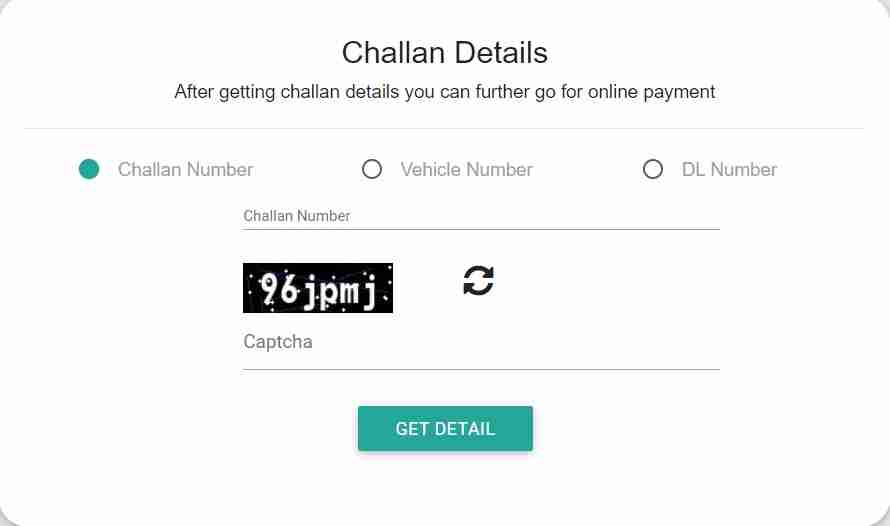
- Then, view your challans and select the payment option.
- Complete the payment process and download the receipt/acknowledgment as proof.
Related Articles:
Pay Goa Police Traffic E-Challans Offline
When faced with an electronic traffic violation notice from the Goa police, you have two options for in-person payment:
- Police Station Payment: Make your way to any local traffic police station with the necessary documents: your driver’s license, proof of identity and residence, and the e-challan itself. At the station, you can settle the fine using cash and receive an official receipt for your records.
- Mobile Payment with Officers: Some traffic officers are equipped with portable e-challan payment terminals. If you encounter one, you can conveniently pay your fine on the spot using a debit or credit card, embracing a cashless transaction method.
Additional Tips and Information
- Always keep your vehicle documents updated and carry them while driving. This includes your driving license, vehicle registration certificate, insurance, and pollution under control (PUC) certificate.
- If you believe the E-Challan has been issued erroneously, there are provisions for contesting it. However, it’s recommended to first pay the fine and then follow the appellate procedure to avoid additional penalties.
- Regularly check the goaonline.gov.in portal or the designated mobile app (if available) to see if there are any pending challans against your vehicle. Proactive checking can help you avoid accumulating fines.
- The Goa traffic police also sends SMS alerts to the registered mobile number of the vehicle owner when an E-Challan is generated. Ensure that your contact details with the RTO are up to date.
- There might be a specific timeframe within which the fine needs to be paid. Delays can lead to increased penalties or even legal action.
- If you face any technical issues during the online payment process, most government websites provide helpline numbers or email support. Don’t hesitate to reach out for assistance.
Benefits of the E-Challan System
- Transparency: The digital nature of E-Challans reduces the chances of corruption and ensures that all fines are properly recorded and accounted for.
- Convenience: Offenders can pay their fines online without having to visit a physical office, saving time and effort.
- Accuracy: Since violations are captured electronically, there is less room for human error in recording details of the offense.
- Database Integration: The system is linked with databases of the Road Transport Office (RTO), allowing for quick verification of vehicle and driver information.
- Environmentally Friendly: By reducing paper usage, the E-Challan system contributes to environmental conservation efforts.
Goa Traffic Police Rules and Regulation
The state of Goa has specific traffic rules and regulations that all drivers and road users must follow to ensure safety and smooth flow of traffic. These rules are based on the Central Motor Vehicles Act and Rules, with some state-specific provisions. This article covers the key traffic regulations that everyone in Goa should be aware of.
- Basic Driving Rules
- Keep Left: Drivers must keep to the left side of the road and allow vehicles coming from the opposite direction to pass on the right.
- Turning: When turning left, stay close to the left side of the road. For right turns, move towards the center of the road before turning.
- Overtaking: Pass vehicles from the right side only, except in special circumstances. Do not overtake at bends, intersections or when it may endanger others.
- Following Distance: Maintain sufficient distance from the vehicle in front to avoid collisions if it suddenly slows or stops.
- Speed Limits: Adhere to posted speed limits. Near schools, hospitals and crowded areas, drive at 25 km/hr or less.
- One-Way Streets: Drive only in the specified direction on one-way roads.
- Right of Way Rules
- At Uncontrolled Intersections: Give way to vehicles approaching from your right side.
- For Pedestrians: Yield to pedestrians at zebra crossings and uncontrolled crossings.
- Emergency Vehicles: Give free passage to fire engines, ambulances and other emergency vehicles.
- Uphill Preference: On steep roads, give way to vehicles going uphill.
- Parking Rules
- Park only in designated areas. Do not park:
- Near intersections, bends, or tops of hills
- On footpaths or near pedestrian crossings
- In a way that obstructs traffic
- On the wrong side of the road
- In ‘No Parking’ zones
- When parking on slopes, turn wheels towards the curb and engage handbrake.
- Use of Lights and Horns
- Use headlights from sunset to sunrise and during poor visibility.
- Use indicators when turning or changing lanes.
- Do not use high beam lights in well-lit areas or when approaching oncoming vehicles.
- Use horns only when necessary for safety. Avoid continuous honking.
- Do not use horns in silence zones like near hospitals and schools.
- Carrying Passengers and Loads
- Do not carry more passengers than the vehicle’s authorized seating capacity.
- For goods vehicles, do not carry passengers in the goods compartment.
- Ensure loads do not project beyond the vehicle body in a dangerous manner.
- Secure all loads properly to prevent them from falling on the road.
- Use of Safety Equipment
- Wear seatbelts in cars at all times.
- Wear helmets when riding two-wheelers. This applies to both riders and pillion passengers.
- Use child restraint systems for young children in cars.
- Traffic Signs and Signals
- Obey all traffic signs, signals, and road markings.
- Follow directions given by traffic police officers.
- Stop behind the stop line at red lights and wait for the green signal.
- Drunk Driving and Mobile Phone Use
- Do not drive under the influence of alcohol or drugs.
- Do not use mobile phones while driving. Use hands-free devices if necessary.
- Special Rules for Two-Wheelers
- Do not carry more than one pillion rider.
- Ensure both rider and pillion wear helmets.
- Do not perform stunts or race on public roads.
- Documents to Carry
Always carry these documents while driving:
- Driving License
- Vehicle Registration Certificate
- Insurance Certificate
- Pollution Under Control Certificate
- Fitness Certificate (for commercial vehicles)
- Traffic Violations and Penalties
The Goa Traffic Police enforce these rules strictly. Violations can result in fines, imprisonment, or suspension/cancellation of driving license. Some common offenses and their penalties include:
- Speeding: Fine of Rs. 1000-2000
- Drunk Driving: Imprisonment up to 6 months and/or fine up to Rs. 10,000
- Driving without License: Imprisonment up to 3 months or fine up to Rs. 5000 or both
- Not wearing seatbelt/helmet: Fine of Rs. 1000
Conclusion
The E-Challan system in Goa represents a forward-thinking approach to traffic management and law enforcement. By leveraging technology, the state aims to create safer roads and a more disciplined driving culture. The online payment facility further underscores the government’s commitment to providing citizen-centric services.
As responsible citizens, it’s our duty to adhere to traffic rules and regulations. However, in instances where violations occur, the E-Challan system ensures that the process of paying fines is straightforward, transparent, and hassle-free. By familiarizing ourselves with this system and promptly clearing any dues, we contribute to the broader goal of road safety and efficient urban management.
FAQs
Q1: What is an E-Challan?
A1: An E-Challan, short for Electronic Challan, is a digital traffic ticket issued for violations of traffic rules. It replaces the traditional paper-based challan system, bringing efficiency and transparency to the process of penalizing traffic offenders.
Q2: How can I check my E-Challan status in Goa?
A2: You can check your E-Challan status in Goa through two main methods:
- Visit the official website of the Goa Traffic Police Department at https://goaonline.gov.in/
- Use the Parivahan Sewa portal at https://echallan.parivahan.gov.in/
Q3: What are the ways to pay an E-Challan in Goa?
A3: You can pay your E-Challan in Goa through the following methods:
- Online through the Goa Traffic Police Department’s website
- Online through the Parivahan Sewa portal
- Offline at any local traffic police station
- On-the-spot with mobile payment terminals (if available with traffic officers)
Q4: What information do I need to pay my E-Challan online?
A4: To pay your E-Challan online, you’ll typically need one of the following:
- Challan number
- Vehicle registration number
- Driving license number
Q5: Can I pay my E-Challan offline in Goa?
A5: Yes, you can pay your E-Challan offline in Goa. Visit any local traffic police station with your driver’s license, proof of identity and residence, and the e-challan. You can pay the fine in cash and receive an official receipt.
Q6: What are the benefits of the E-Challan system?
A6: The benefits of the E-Challan system include:
- Increased transparency
- Convenience for paying fines
- Improved accuracy in recording offenses
- Integration with RTO databases
- Environmental friendliness by reducing paper usage
Q7: What should I do if I believe my E-Challan was issued erroneously?
A7: If you believe your E-Challan was issued erroneously, it’s recommended to first pay the fine and then follow the appellate procedure to contest it. This helps avoid additional penalties while you address the issue.
Q8: Is there a time limit for paying an E-Challan in Goa?
A8: Yes, there is usually a specific timeframe within which the fine needs to be paid. Delays can lead to increased penalties or even legal action. It’s advisable to pay the challan as soon as possible.
Q9: How will I know if an E-Challan has been issued against my vehicle?
A9: The Goa traffic police sends SMS alerts to the registered mobile number of the vehicle owner when an E-Challan is generated. Additionally, you can regularly check the goaonline.gov.in portal or the Parivahan Sewa website to see if there are any pending challans against your vehicle.
Q10: What documents should I always carry while driving in Goa?
A10: While driving in Goa, you should always carry:
- Your driving license
- Vehicle registration certificate
- Vehicle insurance
- Pollution under control (PUC) certificate


